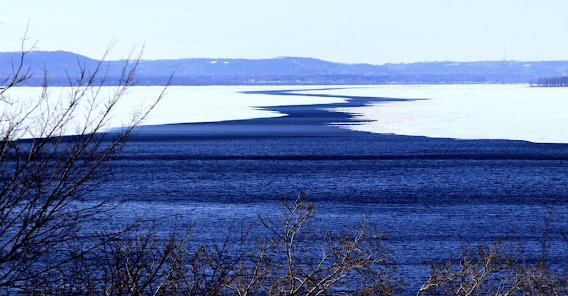 |
Simon learns about CO2. (Washington Post image)
|
When
Simon the Solar-Powered Cat was distributed at a recent science teacher convention, it didn't make waves -- until some teachers started reading it,
reports Maxine Joselow of
The Washington Post. The comic book was created and distributed by "the
CO2 Coalition, a group that rejects the scientific consensus that carbon emissions are causing catastrophic climate change. . . . The group claims it distributed about 700 comic books to teachers at the
National Science Teaching Association's convention last month before being kicked out of the event."
At first, the story of Simon seemed like typical cat-book fare, "but on Page 5, the story took an unusual turn: A 'friendly scientist' explained that Simon subsisted not on kibble, but on carbon dioxide," Joselow writes. "The scientist concluded that CO
2 was a 'miracle molecule' that fueled all life on Earth by helping plants turn sunlight into food." In the book, the friendly teacher explains, "Simon's diet of sunlight, atmospheric carbon dioxide and water is similar to that of all other creatures, even children."
 |
The book features a friendly scientist. (Washington Post image)
|
Joselaw notes, "A large majority of climate scientists agree that humans are causing global warming by emitting massive amounts of CO
2 and other greenhouse gases." But despite that knowledge, the CO
2 coalition claimed success with science teachers. Gregory Wrightstone, executive director of the CO
2 Coalition, told Joselow, "We were overwhelmed by the positive response from the teachers at the convention. In fact, by the second day, we had handed out all of the comic books we had brought."
"On the second day of the convention, an official with the NSTA asked members of the CO
2 Coalition to stop distributing their materials or leave, according to a
YouTube video uploaded by the coalition," Joselow writes. "When Wrightstone refuses to comply, NSTA chief operating officer Ryan Foley said, 'All right, then you're being kicked out. You should pack up and get out.'"
Joselow reports, "The coalition's efforts come as some states have failed to update their standards for teaching climate change in public schools, leaving students at risk of learning incorrect ideas. . . There is evidence that climate instruction is popular. About 77 percent of Americans agreed with the statement that 'schools should teach about global warming' in a
2021 poll by
Yale University's Program on Climate Change Communication; about 22 percent disagreed. Tony Leiserowitz, director of the Yale program, told her, "It's actually one of the most supported policies we have measured."
"The episode raised concerns among scientists and education experts that the teachers could spread climate misinformation to their students," Joselow reports. "It comes as states take divergent approaches to climate instruction in public schools, with New Jersey
requiring students to learn about climate change in nearly every class and the
Texas Board of Education calling for science textbooks to emphasize the 'positive' effects of fossil fuels." Andrew Dessler, a climate scientist at
Texas A&M University, told Joselow, "By focusing 100 percent on this idea that plants need CO
2, they're intentionally misleading people by avoiding the real problems of CO
2, which they didn't talk about at all. It's kind of like if you're talking about cigarettes, and all you talk about is how cool they make you look."






















